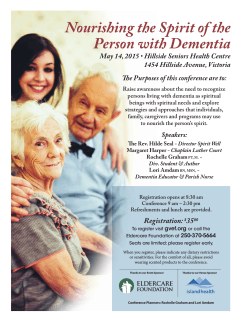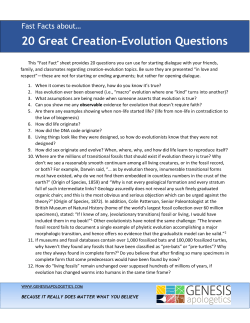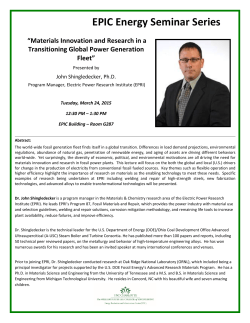
NAME BLOCK DO NOW 1. A sedimentary rock found in
NAME ____________________________________________ BLOCK ________________________________ DO NOW 1. 2. 3. 4. 5. 6. A sedimentary rock found in a hillside is identified as sandstone. Which can most likely be concluded about the hillside? a. The hillside was once a volcano. c. There are no living organisms on the hillside. b. Heat and pressure from within the Earth d. The region was once covered with water. helped from the rock layers on the hillside. The Appalachian mountains in North Carolina are considered to be the oldest mountain range in the world. What plate movement caused these mountains to form? a. Divergent c. Subduction b. Continental-continental convergent d. Transform/Transverse Which is true of any physical or chemical reaction? a. Mass increases. c. Mass is conserved. b. Mass fluctuates (hint: changes). Which best describes the water found in estuaries? a. Brackish c. Fresh water b. Salt water If the primary food source for the whale population in an area is depleted, which will most likely happen? a. The whale population will stabilize. c. Competition among the whales will increase. b. The whale population will increase. d. Starvation will cause the whales to become extinct. Which question was most difficult for you? ________ a. WHY? NAME ____________________________________________ BLOCK ________________________________ DO NOW 1. 2. 3. 4. 5. 6. A sedimentary rock found in a hillside is identified as sandstone. Which can most likely be concluded about the hillside? a. The hillside was once a volcano. c. There are no living organisms on the hillside. b. Heat and pressure from within the Earth d. The region was once covered with water. helped from the rock layers on the hillside. The Appalachian mountains in North Carolina are considered to be the oldest mountain range in the world. What plate movement caused these mountains to form? a. Divergent c. Subduction b. Continental-continental convergent d. Transform/Transverse Which is true of any physical or chemical reaction? a. Mass increases. c. Mass is conserved. b. Mass fluctuates (hint: changes). Which best describes the water found in estuaries? a. Brackish c. Fresh water b. Salt water If the primary food source for the whale population in an area is depleted, which will most likely happen? a. The whale population will stabilize. c. Competition among the whales will increase. b. The whale population will increase. d. Starvation will cause the whales to become extinct. Which question was most difficult for you? ________ a. WHY? EXIT TICKET 1. 2. A fossil was found in a hardened lake of tar. What type of fossil has been found? _________________________ Using words or pictures, describe the relationship between the following words: INDEX FOSSIL EVIDENCE FOR EVTION LAW of SUPERPOSITION RELATIVE AGE 3. Looking at the diagram below: a. Is “E” an intrusion or extrusion? _________________ b. What type of rock is layer “E” made of? SEDIMENTARY METAMORPHIC IGENOUS EXIT TICKET 1. 2. A fossil was found in a hardened lake of tar. What type of fossil has been found? _________________________ Using words or pictures, describe the relationship between the following words: INDEX FOSSIL EVIDENCE FOR EVTION LAW of SUPERPOSITION RELATIVE AGE 3. Looking at the diagram below: a. Is “E” an intrusion or extrusion? _________________ b. What type of rock is layer “E” made of? SEDIMENTARY METAMORPHIC IGENOUS Earth History Review – Week 30, Day 3 Guided Notes LEQ: ______________________________________________________________________________________________ __________________________________________________________________________________________________ What is a fossil? A fossil is the ____________________ remains of a __________________________________ What do fossils tell us? Give _______________________________________________________. They help to show that _______________ has occurred. Provide _______________ about how _________________________ has changed over time. Help scientists understand what __________________________________________________________. How is a fossil formed? FORMATION DESCRIPTION Sediment Layers Movement Erosion What are the different types of fossils? TYPE Petrified Molds and Casts Carbonized Trace Preserved DESCRIPTION PICTURE Video – Becoming a Fossil DIRECTIONS: WATCH the video. LIST 3 things that you learned. 1. ___________________________________________________________________________________________ 2. ___________________________________________________________________________________________ 3. ___________________________________________________________________________________________ Interactive – Dino Discovery DIRECTIONS: TYPE in the website. READ through and INTERACT. ANSWER the following questions based on the game. http://www.alfmuseum.org/interactive10.htm 1. 2. 3. Define “prospecting”__________________________________________________________________________ What type of fossil did you find? PETRIFIED CARBONIZED TRACE PRESERVED Define “excavating” __________________________________________________________________________ Interactive – Geologic Time Scale DIRECTIONS: TYPE in the website. READ through important dates in Earth’s history. ANSWER the following questions. http://science.nationalgeographic.com/science/prehistoric-world/prehistoric-time-line/ 1. How old is the Earth? __________________________ a. During what era did this occur? __________________________ 2. Why is the rise in oxygen levels important to this era? _______________________________________________ ___________________________________________________________________________________________ 3. List 3 important events that occurred during the Paleozoic era. a. __________________________________________________ b. __________________________________________________ c. __________________________________________________ 4. In what era do flying birds, small mammals, and flowering plants arise? _________________________ 5. How old are modern humans, homo sapiens? __________________________ a. During what era did this occur? __________________________ Journal Interactive – Digging in the Dirt DIRECTIONS: TYPE in the website. READ through the journal. ANSWER the following questions based on what you read. http://www.nature.ca/discover/exf/dggngnthdrt/index_e.cfm 1. What was most important to the archeologists on Day 3? ____________________________________________ 2. Why do you think the archeologists had to cover the skeleton in plaster? ________________________________ ___________________________________________________________________________________________
© Copyright 2025









